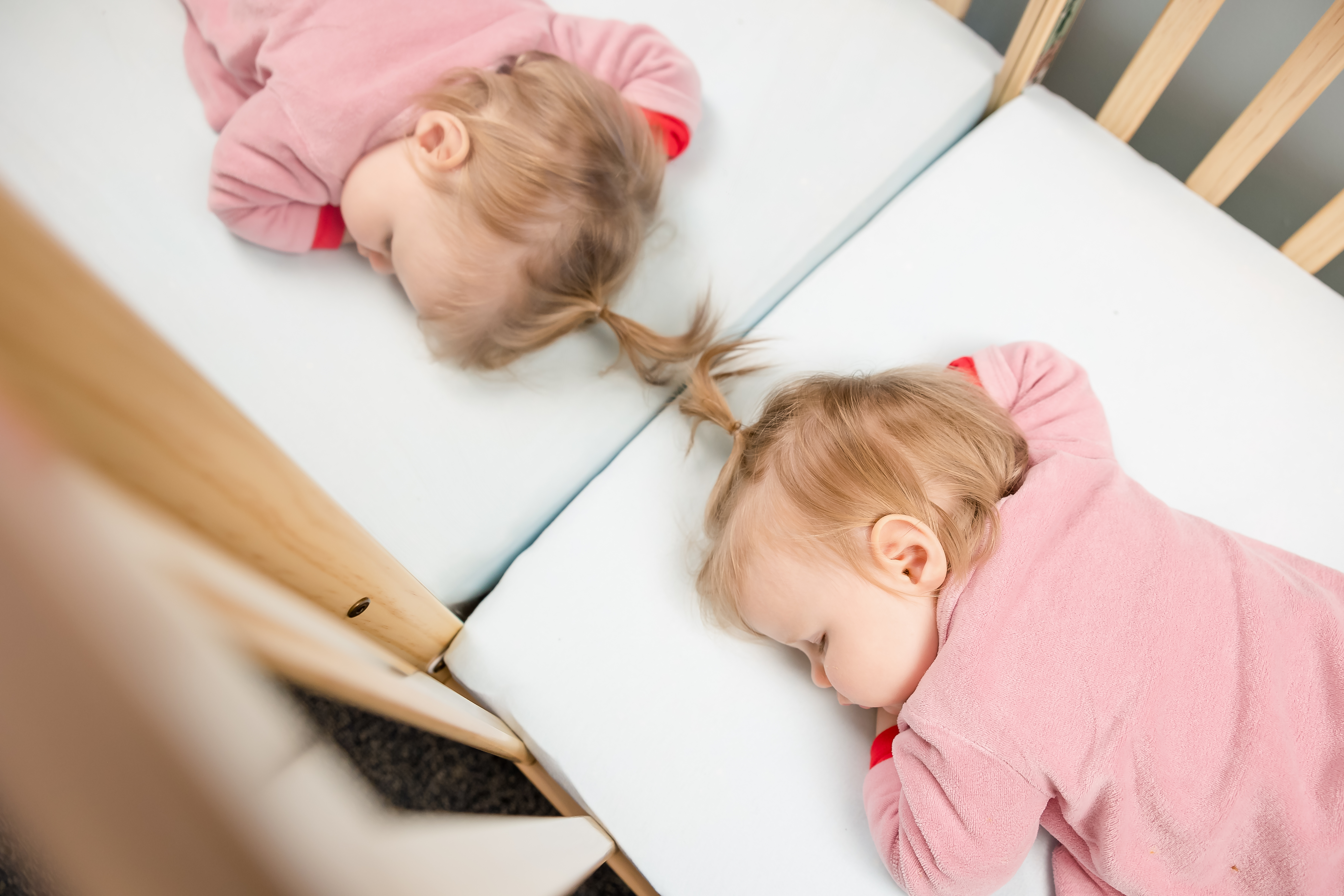March 10, 2024
Napping at Daycare: How Tierra Encantada Prioritizes Sleep for Infants, Toddlers and Preschoolers
Napping at daycare is just as important as napping at home. Napping is beneficial for a child’s growth and development. Some scientists even equate sleeping to learning to walk and talk; it’s that important.

Many parents have questions about nap schedules at daycare and preschool, especially if it’s their first time sending a child to one of our centers.
Some of the common questions include:
- “Will my child nap at daycare?”
- “How many naps will my child take during daycare?”
- “Does preschool offer naps?”
- “How long will my child nap at daycare?”
We’ll break down these questions in this article and discuss why our curriculum prioritizes napping for all classrooms, from the infant room and beyond.
Why Is Napping at Daycare Important?
Napping is beneficial for a child’s growth and development, and that logic doesn’t change when it comes to daycare and preschool. Some scientists even equate sleeping to learning to walk and talk; it’s that important.
For infants especially, napping allows them to “…extrapolate what they’ve learned, teaching them a template they can apply to new situations,” according to Cognitive Psychologist, Rebecca Gómez, of the University of Arizona in Tucson.
And it’s not too different for toddlers, either. A consistent nap schedule allows them to unwind, debrief, and restore energy. It gives them a ‘fresh start’ when they wake up.
Most newborns can sleep 16-18+ hours per day, and that greatly decreases as they age. After about a year, the majority of toddlers between one to two years of age are down to one nap per day, generally lasting one and a half to two hours.
It’s also shown that most children three to five years old still benefit from an afternoon nap, since they typically require 12 hours of sleep within a 24 hour period.
A daily and consistent nap schedule is essential for both good days and good nights. Many people believe that without naps, their kids will sleep better at night. But on the contrary, when children are overly tired, they become stressed and irritable. This causes their minds to be overactive, which, in turn, makes it more difficult to fall asleep and stay asleep at night.
Naptime at Tierra Encantada
At our Spanish immersion daycare and preschool, we include naptime in each age group’s daily schedule.
In our preschool rooms, we designated two hours for naptime each day. The naps generally occur after lunch and bathroom time. If kids finish bathroom time early, they head over to our learning zones before the rest of the class is done with their potty break. The same schedule is followed in our pre-k classrooms.
The infant classrooms work a bit differently because infants require a lot of consistent, frequent napping throughout the day. We loosely incorporate two nap times throughout the day that last roughly an hour to an hour and a half each; however, infants sleep by demand, so we always follow each individual child’s needs.
Naptime Environment at Tierra Encantada
In terms of the napping environment we create at our Spanish immersion daycare and preschool, we aim to offer a relaxing and enjoyable atmosphere so children feel at home as much as possible.
Our staff is properly trained and certified to work with children and their respective age groups. And part of their training comes with learning to prepare children for naptime. Our educators always follow safe sleeping practices, like placing infants on their backs when laying them down for a nap and keeping the crib areas free of any items like toys, pillows, etc.
They also help each child fall asleep in the way they like to be comforted. Each child is different, so we ensure that we take an approach that works per child, whether that’s talking softly, singing, rocking, swaddling, or even using a pacifier if the parents offer one.
Each state has different safety requirements regarding lighting, room layout, sleeping amenities etc. that our centers and staff strictly adhere to.
When it comes to cribs vs cots, our infant classrooms use cribs and our pre-k and preschool rooms use cots.
Our pre-k and preschoolers are encouraged to bring their own blankets and stuffed animals, too, so that they have the most comfortable napping experience possible.
And for the children that just can’t fall asleep, we offer quiet time in lieu of naptime. Quiet time consists of non-noisy activities where we’ll provide ‘quiet kits’ that include items like books, fidget toys, Rubiks cubes, etc.
The designated quiet time supports that much-needed break and allows children to enjoy a few moments of peace, regroup, and play on their own for a short time without a true nap.
Napping at Daycare and Beyond
At Tierra Encantada, we understand the importance of naps for infants, toddlers, and preschool-aged children, and we strive to create a schedule that best serves their growth and development.
Naptime is baked into our daily schedules in our pre-k and preschool classrooms and offered on demand in our infant classrooms; nonetheless, napping at daycare is not overlooked at our centers.
If you’re looking to enroll your child in a Spanish immersion daycare or preschool, we’d love to have you join us. Learn more about our offerings, find a center near you, and book a tour today.